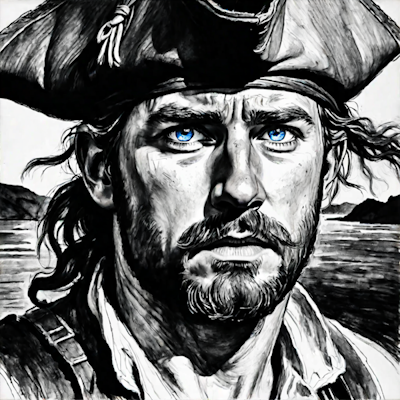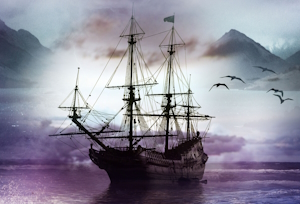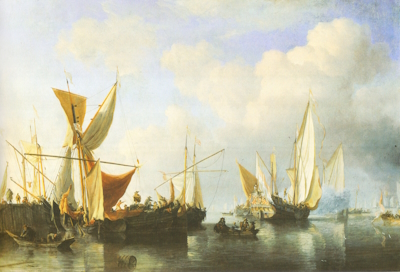
Pirate captains were unlike captains on merchant and naval ships and even on some privateer vessels, who had absolute authority and could act like tyrants without repercussion and who usually came from the privileged class. The amount of authority a pirate captain had could vary from vessel to vessel. Pirates weren’t generally willing to accept too much authority and it would have been difficult to lead a group of individuals who valued their liberty above all else through coercion, although the crew generally accepted they needed a some sort of representative or figurehead. Many mariners had turned to piracy precisely because of the strict discipline and harsh punishments of life on merchant and naval ships.
 Pirate Captains were usually elected because they were respected, not feared. They had to possess ability, courage, and charisma, and be willing to lead from the front. They also needed capture enough prizes to keep the crew happy and fed.…
Pirate Captains were usually elected because they were respected, not feared. They had to possess ability, courage, and charisma, and be willing to lead from the front. They also needed capture enough prizes to keep the crew happy and fed.…

 Pirates made use of many types of ships, in particular smaller versatile vessels which could navigate the shallow waters and shoals characteristic of the Caribbean. Bigger was not necessarily better as larger ships with their complex rigging and large area of canvas were more difficult to sail. Although the term ‘ship’ strictly applied to three-masted, fully rigged vessels, the word was often applied to sloops and brigantines at the time. The names applied to seafaring vessels have changed over time, but here the terms here are those used during the Golden Age of Piracy. During this period, ships were often defined by their type of rigging rather than the shape of their hull or number of masts. A lot of ships possessed at least some oars in the early 18th century, whether brigantines, sloops, or frigate-built ships, allowing for more versatility, especially when there was no wind. At the time, the term man-o’-war could be applied to any vessel of any size fitted for war.
Pirates made use of many types of ships, in particular smaller versatile vessels which could navigate the shallow waters and shoals characteristic of the Caribbean. Bigger was not necessarily better as larger ships with their complex rigging and large area of canvas were more difficult to sail. Although the term ‘ship’ strictly applied to three-masted, fully rigged vessels, the word was often applied to sloops and brigantines at the time. The names applied to seafaring vessels have changed over time, but here the terms here are those used during the Golden Age of Piracy. During this period, ships were often defined by their type of rigging rather than the shape of their hull or number of masts. A lot of ships possessed at least some oars in the early 18th century, whether brigantines, sloops, or frigate-built ships, allowing for more versatility, especially when there was no wind. At the time, the term man-o’-war could be applied to any vessel of any size fitted for war. What did pirates eat? Anything they could get their hands on. Although fresh produce was scarce on long sea voyages, pirates didn’t usually spend as long at sea as the average sailor on a naval ship or merchantman. They would normally sail out from their base to seize there pray and return with their booty, where they could purchase fresh provisions. When no friendly port was available, food could be obtained by foraging on one of the many islands or even from plundering. After the fall of the pirate nest Nassau in 1718 and with the increasing pressure on pirates from the Royal Navy, their bases no longer existed and the sea rovers probably had to go for longer periods without fresh food.
What did pirates eat? Anything they could get their hands on. Although fresh produce was scarce on long sea voyages, pirates didn’t usually spend as long at sea as the average sailor on a naval ship or merchantman. They would normally sail out from their base to seize there pray and return with their booty, where they could purchase fresh provisions. When no friendly port was available, food could be obtained by foraging on one of the many islands or even from plundering. After the fall of the pirate nest Nassau in 1718 and with the increasing pressure on pirates from the Royal Navy, their bases no longer existed and the sea rovers probably had to go for longer periods without fresh food.